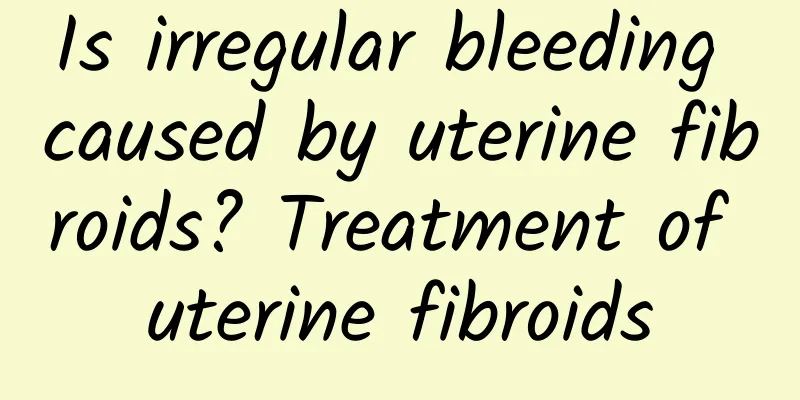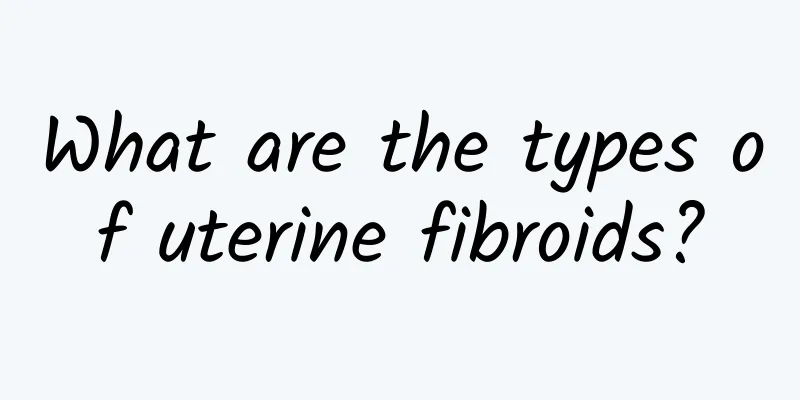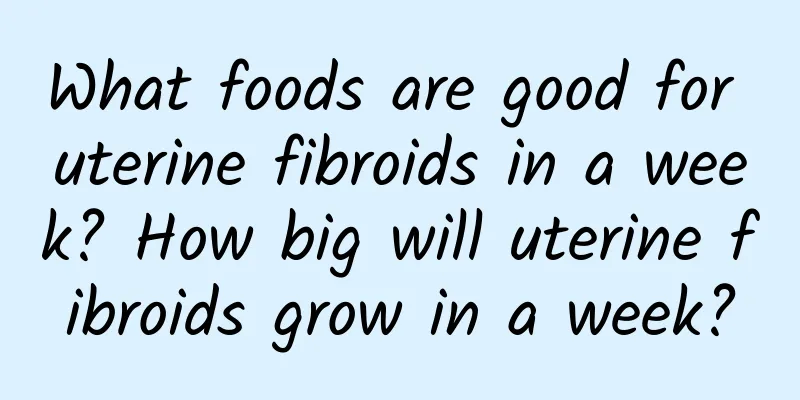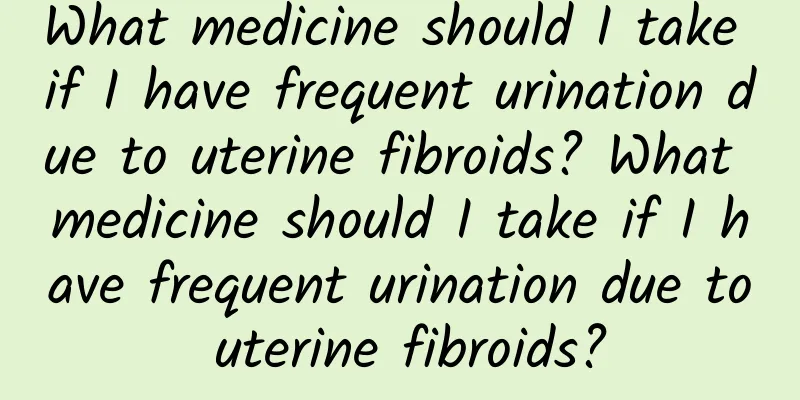Is irregular bleeding caused by uterine fibroids? Treatment of uterine fibroids

|
Ms. Fan, who is in her 30s, had persistent irregular vaginal bleeding after her period and felt bloating and pain in her lower abdomen. She went to the hospital for a checkup and was diagnosed with uterine fibroids. Experts say that among patients with uterine fibroids, some patients experience periodic vaginal bleeding, mainly increased menstruation, prolonged menstruation or shortened cycle; some patients experience continuous or irregular bleeding, and many people also experience lower abdominal swelling, back pain and abdominal pain. When the fibroids are large, bladder or rectal compression may cause symptoms such as frequent urination and constipation. Long-term vaginal bleeding may also cause anemia, so once vaginal bleeding or obvious changes in menstruation, or abnormal changes in menstrual volume, it is best to seek medical attention in a timely manner. Several types of uterine fibroids The first category is people who are affected by genetic factors, which are manifested as racial differences and family aggregation. For example, the incidence rate of blacks is 3 times higher than that of whites or Asians, and the incidence rate of immediate relatives or sisters with uterine fibroids is 4.2 times higher than that of people without a family history. The second category is people with diseases that cause ovarian hyperfunction, such as polycystic ovary syndrome; there are also diseases with ovarian endocrine function, such as granulosa cell tumor and ovarian granulosa cell tumor, which can cause uterine fibroids. The third category is related to childbirth. The incidence of uterine fibroids is inversely proportional to childbirth. Nowadays, elderly people in their 70s have at least four children, which explains why women rarely suffered from this disease in the past. This is because the ovaries do not ovulate in October, and hormone secretion is at a low level to protect the health of the uterus. The fourth category is affected by physical health. Why do sisters get sick when eating the same food? This is related to personal constitution. Since hormones require receptors, some people are more sensitive and more susceptible to hormones, so they are relatively prone to uterine fibroids. The fifth category is related to life. The first is obesity. Studies have shown that because obese people are more likely to synthesize estrogen, the risk of developing fibroids increases by 21% for every 10 kg increase in weight. Different treatments for uterine fibroids If a pregnant woman suffers from uterine fibroids, should she receive treatment immediately or wait until the baby is born before receiving treatment? Because some medications are not allowed during pregnancy, parents will worry about harming the baby. Pregnant women with uterine fibroids will more or less affect the development of the fetus, making it more likely to have miscarriage, dystocia, incorrect fetal position, postpartum hemorrhage, etc. Therefore, during pregnancy, it is very important to correctly treat uterine fibroids. Experts point out that intervention in early pregnancy for patients with uterine fibroids is likely to lead to miscarriage, and it is recommended to wait until the second trimester. If the fibroids are large, it is estimated that the possibility of complications of continued pregnancy is greater, and the patient may need to live at the same time, terminate the pregnancy by abortion, short-term specialist uterine fibroid removal, or uterine fibroid removal with abortion. When the diameter of the uterine fibroid is larger than 6 cm, the uterine fibroid may continue to grow. In addition, large fibroids often have red degeneration to stimulate uterine contraction or peritoneal irritation signs. When obstetricians only recommend patients to undergo myomectomy during pregnancy, only when necessary, due to myomectomy, bed rest and the application of painkillers. The treatment recommendation for uterine fibroids in late pregnancy is that it is not recommended to treat small fibroids. For tumors larger than 8cm in diameter but asymptomatic, cesarean section can be expected, and myomectomy can be performed at the same time. Because large uterine fibroids not only affect uterine contraction, disorder and prolonged productivity, but also affect postpartum placenta, postpartum hemorrhage and postpartum infection in normal pregnancy. In some cases, due to postpartum hemorrhage and postpartum infection, or forced uterine removal, it may also be difficult to control. Therefore, the cesarean section mode is appropriate for cesarean section myomectomy. |
<<: What are intramural uterine fibroids? What are the treatments for intramural uterine fibroids?
>>: How do you get multiple uterine fibroids? What are the dangers of multiple uterine fibroids?
Recommend
Common causes of adnexitis
Among all kinds of gynecological inflammatory dis...
Body Shaping Tutorial - Desk Push-ups for Thin Arms
The hot summer is here, and many girls have throw...
What are the effects of anterior uterine wall fibroids? Are anterior uterine wall adenomyosis serious?
What are the effects of anterior uterine wall fib...
Quinoa becomes a new vegetable cocktail trend
In recent years, the superfood that has been love...
Can threatened abortion be prevented by taking medicine?
Medication for threatened abortion may be helpful...
What happens if I have back pain during menstruation?
What happens if I have back pain during menstruat...
Are endometrial polyps uterine cysts?
Endometrial polyps and uterine cysts are two diff...
Protect your knee joints! 6 exercises a day to increase muscle strength
[Key Points]: What you may not know is that when ...
Mild cervical erosion can be seen from the erosion surface
Mild cervical erosion can be seen from the erosio...
Sculpt an S-curve without shrinking your breasts! Remember 5 Diet Plans
"Lose weight, lose weight, but I'm most ...
A brief analysis of the etiology of hyperprolactinemia
We must understand the cause of hyperprolactinemi...
Several misunderstandings about uterine fibroids that need attention
In real life, there are some misunderstandings ab...
What should I pay attention to when having cervical warts during menstruation?
There are many diseases in life, big and small, i...
What is the cure rate for Bartholinitis?
We all know that the occurrence of Bartholinitis ...
What are the treatments for adnexitis?
Medical research shows that adnexitis is a common...









